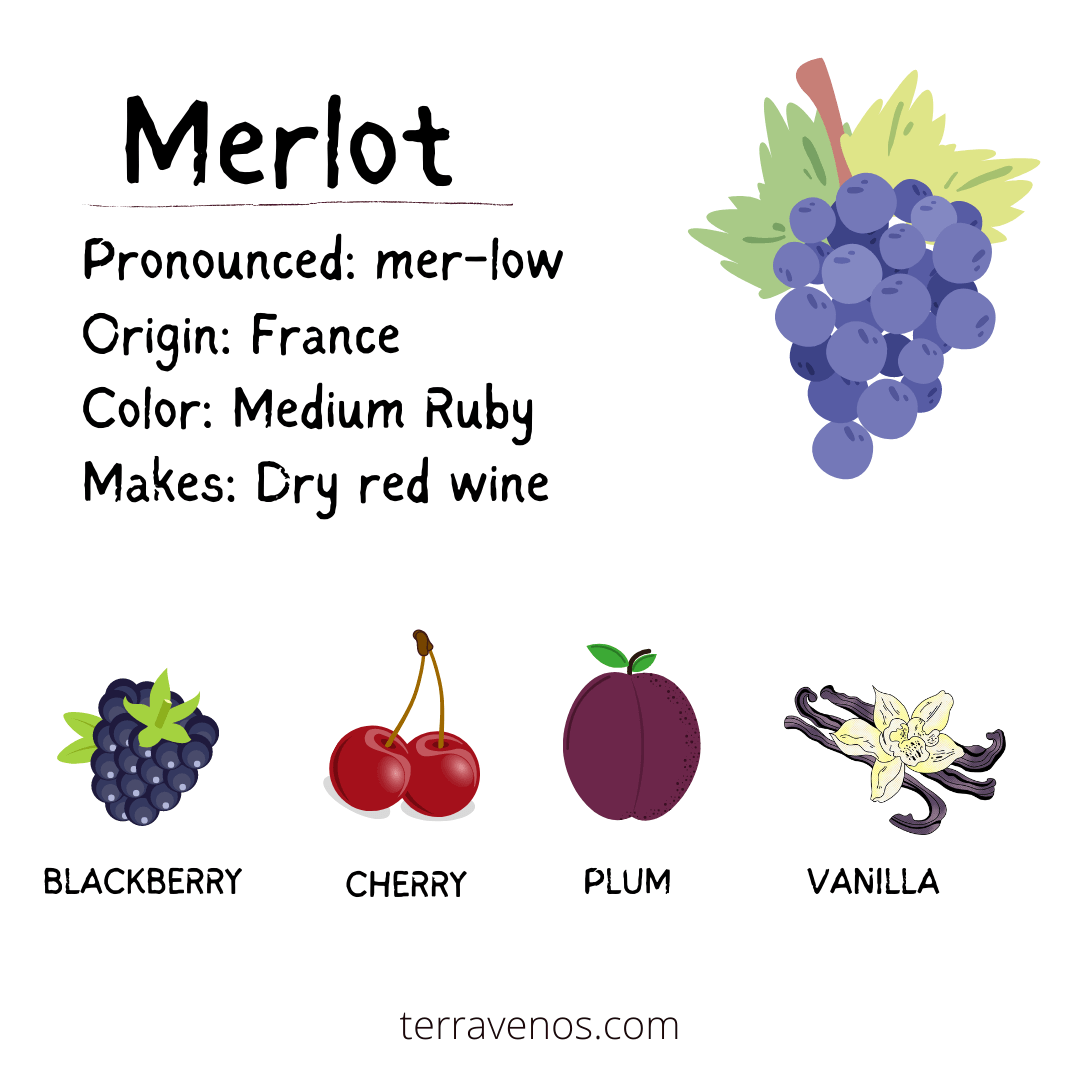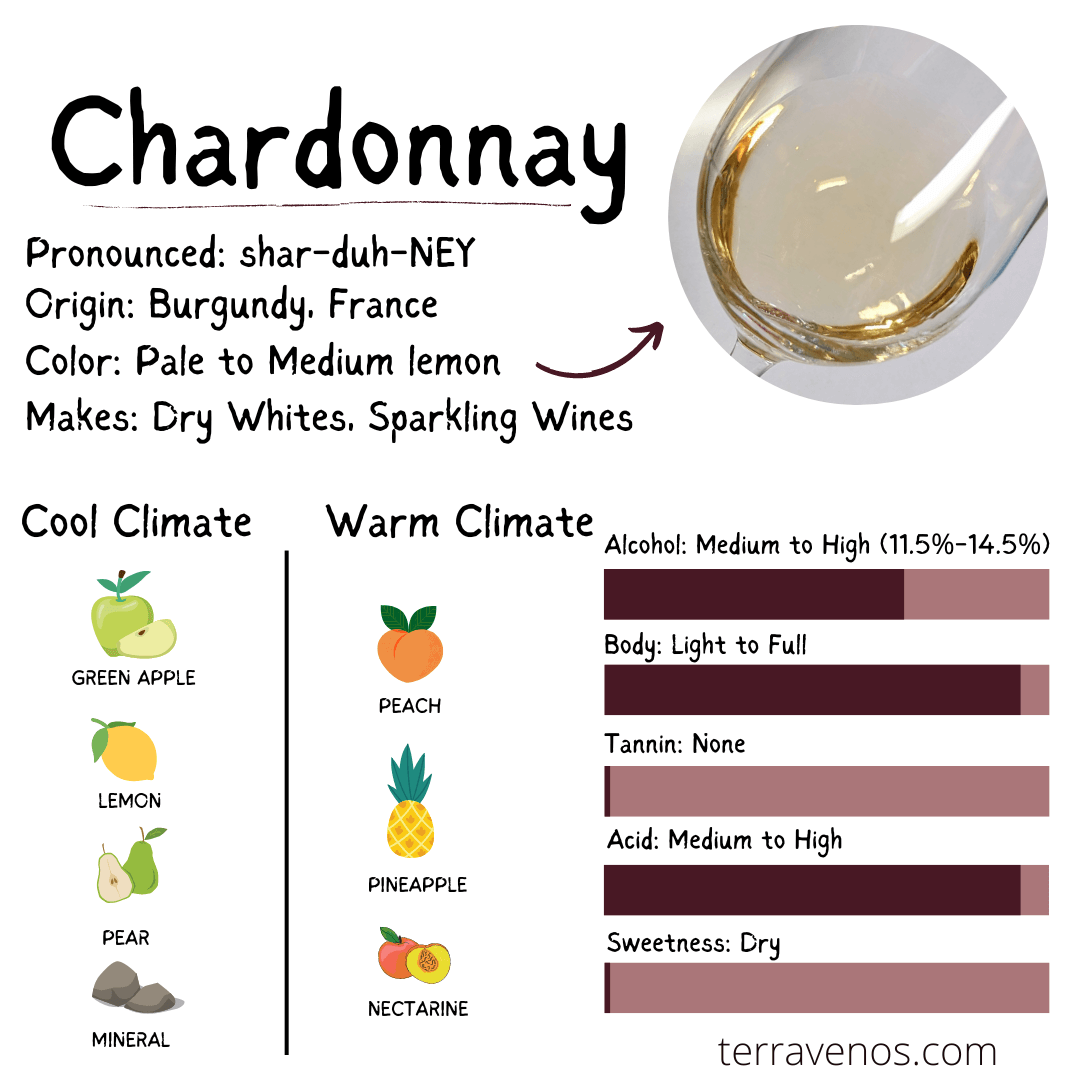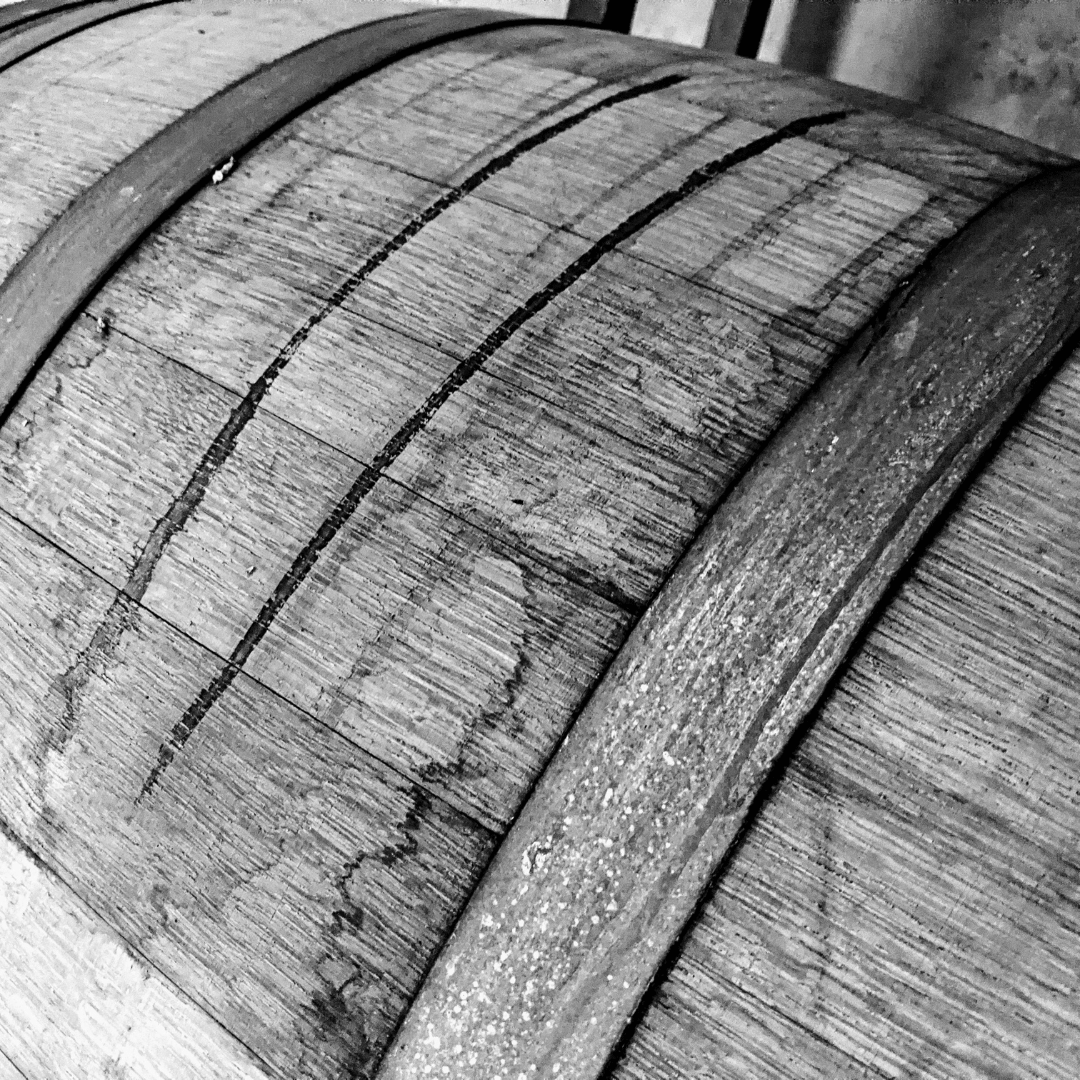
When it comes to exploring the world of wine, there are two classic choices that never disappoint: Merlot and Chardonnay.
Merlot is a red wine that expresses a soft and velvety character with delightful notes of ripe plum and cherry. Chardonnay, a vibrant white wine, offers a medium-bodied profile, showcasing crisp apple and zesty citrus flavors. You can find both wines made at all price points, making them great wine choices.
Here’s what you need to know about the differences between Merlot and Chardonnay wine.

Merlot Wine Basics: A Smooth Red

Originating from the Bordeaux region in France, Merlot has earned its place as one of the most cherished red wines around the world Merlot is widely grown in various wine regions, including California, Italy, and Chile. With a medium to full-bodied profile, Merlot displays flavors of ripe plum, cherry, and blackberry, often accompanied by hints of chocolate and herbs (check out this full post on Merlot wine).
Merlot’s smooth tannins and approachable nature make it an excellent red wine choice for newer wine drinkers.
Fun Wine Fact: Merlot is a popular blending grape in Bordeaux blends, contributing to their complexity and balance. Learn more about the art of blending wines and why we blend wines here.
Famed Merlot Winegrowing Regions:
- Bordeaux AOC, France
- Napa Valley AVA, California, USA
- Tuscany, Italy
- Central Valley, Chile
- Stellenbosch, South Africa
Chardonnay Basics: A Lovely White

From Burgundy, France, Chardonnay is one of the world’s classic white wines made in a range of styles. Chardonnay is extensively grown in regions such as France, California, Australia, and Italy. Showcasing a medium to full-bodied profile, Chardonnay offers flavors of crisp apple, juicy pear, and zesty citrus, often with nuances of vanilla and butter. Its vibrant acidity and smooth texture contribute to a beautifully balanced and enjoyable wine.
Fun Wine Fact: Chardonnay’s a winemaker’s grape, meaning that how the wine is made will shape its final style. Check out this full post on Chardonnay wines to discover more.
Famed Chardonnay Winegrowing Regions:
- Burgundy AOC, France
- Napa Valley AVA, California, USA
- Marlborough, New Zealand
- Casablanca Valley, Chile
- Adelaide Hills, Australia
Wine Comparison: Merlot vs. Chardonnay
Check out this side-by-side comparison on the key differences and similarities between Merlot and Chardonnay.
Merlot Wine Profile:
- Sweetness: Most Merlots will be dry wines. Inexpensive Merlot wines may have a little residual sugar and be off-dry.
- Alcohol: Merlot is a medium alcohol wine, between 12%-14% AVB.
- Body: Merlot boasts a smooth and medium to full-bodied profile, complemented by supple tannins.
- Flavor Profile: Ripe plum, cherry, blackberry, with hints of chocolate and herbs.
- Tannins: Merlot generally features soft tannins, contributing to its approachable and easy-to-drink nature making it a great red wine for new wine drinkers.
- Acidity: Merlot usually exhibits moderate acidity, ensuring a well-balanced taste.
- Aging Potential: While some Merlots age gracefully, most are best enjoyed within a few years of bottling.
Chardonnay Wine Profile:
- Sweetness: Like Merlot, Chardonnay is a dry wine.
- Alcohol: Chardonnay falls in the medium alcohol category, around 12%-14% ABV.
- Tannin: Most Chardonnay wines won’t have any tannin.
- Body: Chardonnay showcases a medium to full-bodied profile with a smooth texture.
- Flavor Profile: Crisp apple, juicy pear, zesty citrus, sometimes with hints of vanilla and butter.
- Acidity: Chardonnay typically displays vibrant acidity, contributing to its freshness and balance.
- Aging Potential: Most Chardonnays are made to be enjoyed within a few years of bottling, though some can age for decades.
Helpful Wine Buying Tip: If you get a Chardonnay that’s not to your preference, keep trying! Chardonnays are a bit like a chameleon in the wine world. You need to taste many different Chardonnays to get a sense for what this wine is.
Are Merlot and Chardonnay Similar?
Merlot and Chardonnay are both easy-drinking wines that tend to be middle-of-the-road and approachable for newer wine drinkers. They both have a smooth, round body and tend to have a full mouthfeel.
What Is the Difference Between Merlot and Chardonnay?
Merlot is a red wine known for its soft tannins and flavors of ripe plum, cherry, and chocolate. Chardonnay is a white wine celebrated for its vibrant acidity and refreshing notes of apple, pear, and citrus, often accompanied by hints of vanilla and butter.
Merlot vs. Chardonnay Winemaking

Winemakers commonly use oak for both Merlot and Chardonnay, imparting flavors of chocolate and herbs in Merlot and hints of vanilla and butter in Chardonnay. Here’s what oak adds to wine.
As a red wine, Merlot undergoes fermentation at slightly higher temperatures to extract its rich color and flavors. Chardonnay is fermented at cooler temperatures to preserve its crisp and fruity characteristics.
Helpful Tip: Learn more about the basics of wine fermentation here.
Merlot vs. Chardonnay: Food Pairings and Serving Temperature

Merlot’s smooth and supple nature makes it a fantastic match for red meats, pasta dishes, and flavorful cheeses. On the other hand, Chardonnay’s vibrant acidity and smooth texture are a delightful complement to seafood, poultry, pasta dishes, and creamy sauces.
Helpful Tip: Check out this full post on Merlot pairings, and here are my favorite go-to everyday Chardonnay pairings, along with this Chardonnay cheese pairing guide.
Merlot and Chardonnay Serving Temperature
| Wine | Ideal Serving Temperature | Decanting |
|---|---|---|
| Merlot | Slightly below room temp (around 60-65°F or 15-18°C) | Decant 30 mins to 1 hr (for certain aged Merlots) |
| Chardonnay | Chilled (45-50°F or 7-10°C) | Not typically necessary. Best served immediately after opening. |
While some aged Merlots may benefit from aeration, Chardonnay is best enjoyed immediately after opening to retain its vibrant acidity and fruit-forward attributes.
Which Is More Expensive: Merlot vs. Chardonnay?
When considering the prices of Merlot and Chardonnay, you’re probably curious about cost.
Merlot Wine Cost:
- Entry-level Merlot wines range from $10 to $15 per bottle, providing excellent value and showcasing the varietal’s fruity appeal.
- Premium Merlots from renowned regions or esteemed producers can range from $25 to $60 or higher, reflecting their exceptional craftsmanship.
Helpful Tip: Check out this post on how much you should be paying for a bottle of Merlot wine.
Chardonnay Wine Cost:
- Entry-level Chardonnay wines are available within an accessible price range, typically ranging from $10 to $15 per bottle. These wines offer delightful everyday drinking options.
- Premium and top-tier Chardonnays can range from $30 to $80 or more, exemplifying terroir and winemaking craft.
Helpful Tip: If you’re curious about how a bottle of wine gets its price, here’s a complete list of factors (this is a long list, but helpful in understanding just how is.
Which Is Better: Merlot or Chardonnay?
If you enjoy smooth and fruit-forward red wines with a touch of chocolate and herbs, Merlot will likely be your go-to. If you appreciate a refreshing white wine with crisp apple, citrus, and a hint of butter, Chardonnay will be your ideal selection.
Personal Note: I always have several bottles of Merlot and Chardonnay in my cellar – you should, too.
Final Thoughts – Merlot or Chardonnay?

Both Merlot and Chardonnay offer delightful options with their unique characteristics. Hosting a side-by-side tasting is an excellent way to experience the differences between these two wines.
Get yourself two bottles of similarly priced Merlot and Chardonnay, invite some friends, and host a side-by-side comparison.
Merlot presents a smooth and approachable wine, perfect as an everyday red wine.
Similarly, Chardonnay, with its lively acidity and diverse flavor profile, provides a versatile choice for a wide range of pairings throughout your week.
Discover More
Chardonnay vs Cabernet Sauvignon
Merlot vs Chardonnay
Merlot vs Pinot Noir
Merlot vs Cabernet Sauvignon
Merlot vs Malbec
Sangiovese vs Merlot
Merlot vs Pinot Grigio
Thirsty for More?
Check out these 5 fun Chardonnay facts, and head over to this post for my favorite everyday Chardonnay food pairings for real people with real lives.
One of the best ways to learn about wine is to host your own wine tastings.
You may be interested in comparing other classic wine varieties, such as Merlot vs. Malbec, or Chardonnay vs. Pinot Grigio.
Pour yourself a glass and sip through these signature wines from famous wine regions worldwide.



